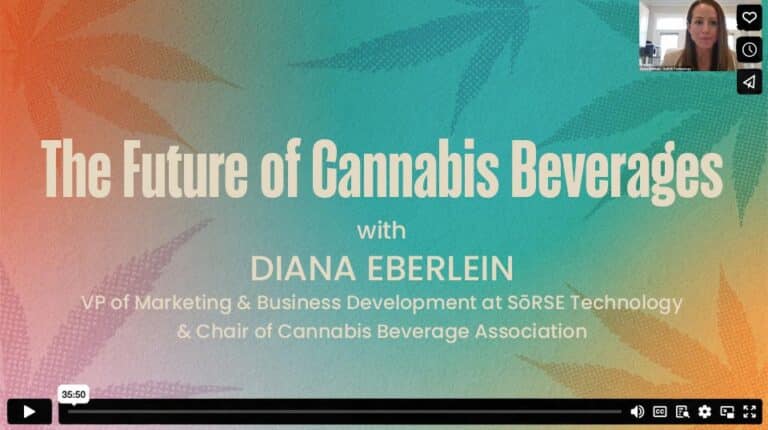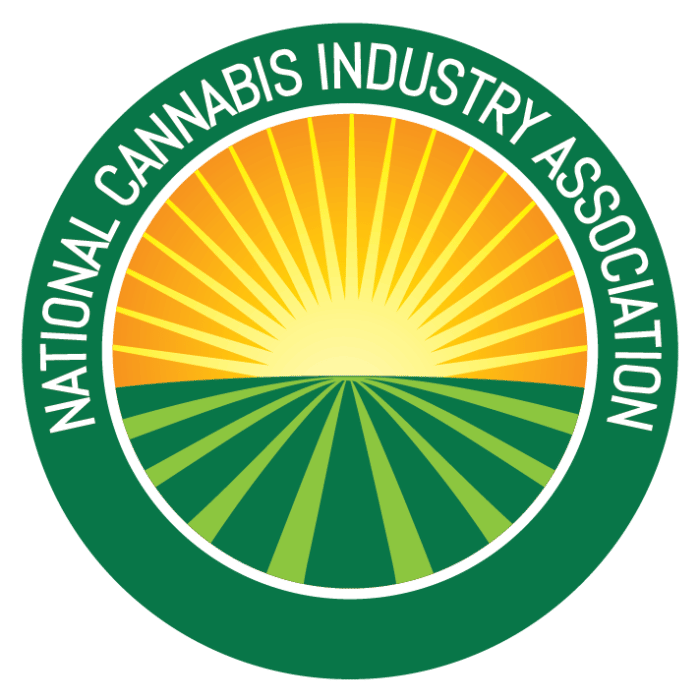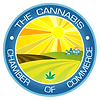Jen Lamboy, Director of Strategy, Hybrid Marketing Co.
Diana Eberlein, VP of Marketing & Business Development at SōRSE Technology | Forbes Agency Council Member | 40 Under 40 MJ Venture 2023 | Chair of Cannabis Beverage Association
Jen Lamboy, Director of Strategy, Hybrid Marketing Co.
Cannabis beverage is bubbling to the surface of our industry in a really interesting way. It’s legal in 16 markets. Minnesota, Florida and even Texas are onboarding beverage in unprecedented ways. And I almost want to say, if you know, you know, if you’re on the inside of the cannabis industry, working in the B2B space, we’re watching all the time. We have huge awareness around it on the consumer side, a little bit different there. That’s why I wanted to sit down with Diana Everline today. She is a mover and a shaker in cannabis. Most recently, she’s become the president of the Cannabis Beverage Association, which is a national nonprofit trade association. It launched in the last five years to represent and support the rapidly growing cannabis beverage sector of the industry. So Diana, thank you so much for jumping on with me today..
Diana Eberlein, VP of Marketing & Business Development at SōRSE Technology
Thank you. It’s great to be here and anything we can do to bring awareness to the small but mighty infused beverage category is good. So we’re happy to, you know, share more information about the Cannabis Beverage Association and the fact that we are a national organization with now 8 chapters across the US looking to more, you know, you said 16 markets, we would love to hit all 16. We are excited about what’s happening in Minnesota and the markets that you mentioned. It’s bringing attention to a category that often has me answering the question of “what is a cannabis beverage?” They exist, they’re a thing and avoiding that conversation means we’re headed in the right direction. So I’m excited to be here and talk a little bit more about what the association is doing and you know where we see beverage going.
Jen Lamboy, Director of Strategy, Hybrid Marketing Co.
Awesome, awesome. Well, first let’s define, can we define beverage a little bit? Because if we’re thinking about beverage in a traditional manner, ready to drink versus syrups, elixirs, ready to make stick packs, those things define beverage as as the CDA does.
Diana Eberlein, VP of Marketing & Business Development at SōRSE Technology
Right. I mean the way we look at it, it’s how are you consuming it? Is it using a water soluble, you know, emulsion tech where the onset is going to be consistent at the 10 to 15 minutes, the offset is 45 to an hour? I think the big determination is how is the consumer consuming it and when the brand is being developed, how does the brand market it. A lot of times the reason that you see liquid formats positioned as a syrup or an elixir or a tincture, it’s often because they want to make a higher potency product and get around some regulations where there might be some dosing restrictions or caps. And we have a lot of markets, particularly on the East Coast that are launching with lower caps, which I think has benefits, but it also has some cons when you’re looking at the West Coast market, who’s targeting the existing cannabis consumer, They have 100 milligram, 2 ounce shots that are at the top of the sales charts. You know, you’ve got Boston with a 10 milligram beverage cap, which again pros and cons to how they’re entering the market. But ultimately there’s room for a lot of variation and interpretation of beverage. But I think ultimately that’s kind of dictated by the brand. And when it comes to the CBA, anyone who again is going to support the overall messaging around beverage and the application and the routine and social normalcy of beverage, you know, we’re willing to promote and collaborate with.
Jen Lamboy, Director of Strategy, Hybrid Marketing Co.
So you talked a little bit about legislation varying from state to state. So you just moved to Virginia, relocated from the West Coast. I know you’re a East Coast girl.
Diana Eberlein, VP of Marketing & Business Development at SōRSE Technology
Yeah, originally from New York. Lived in Seattle for eight years, and frankly, had I never moved to Seattle, I probably wouldn’t be here working in cannabis. I was a D.A.R.E. baby growing up by, you know, cannabis was the gateway and it’s scary and all this stuff. And when I moved to Seattle eight years ago, it was a legal rec market where California, where I’d moved from, was not. Everyone I knew consumed in Seattle. Different ways, different methods of consumption. And I just thought, these are functioning adults with responsibility. They’re doing pretty…doctors, lawyers. I thought there has to be something to this that maybe I can apply to my life. I did a lot of trial and error. I don’t think a lot of consumers are willing to do as much trial and error. I consider myself a human guinea pig whether it’s skin care or in this case cannabis. But you know, I had some negative experiences with different formats that weren’t right for me. For me beverage was the appropriate solution and that’s how I ended up in this marketplace. But when, for me as a low dose consumer, who’s micro dosing, living in Seattle was tough. Most of the top 10 SKU’s there are all 100 milligram beverages, and most of them are particularly small formats, whether it’s 2 ounces or 6.7, you know, not a full 12 ounce beverage with like 2 milligrams. I was watching markets like California with Cann and W*nder, other markets with like Happi. And you know, now Minnesota’s got a number of low dose beverages and I was envious because I couldn’t get those in Seattle. The irony is me moving to Virginia, which wasn’t, which does turn rec next year but isn’t quite there. It’s easier for me to get the low dose beverages because of the hemp D9 than it was when I was in Seattle. So having the accessibility to the products is a huge reason why the beverage category hasn’t grown as fast as we’d like it to. There’s a number of reasons for that, but we’re seeing that momentum with the hemp D9 and the accessibility of those products in different markets and of course ecommerce which certainly helps as well. But I think you know for me being in Virginia, you know it’s kind of kismet that I ended up here. We’re looking to make some national changes. We have the farm bill coming up. There’s a lot of questions about what’s going to happen with hemp D9 and is it going to be that that workaround is going to be closed up or are regulators going to meet us in the middle in terms of look, genie’s out of the bottle, you know this is out there. It’s a lot harder to close it down than to work with the people working in the space. And most of them are doing a great job working with beverage professionals, particularly in Minnesota where you have brewers who make beverage day in, day out working in this space and they’re already used to working in a compliance, you know, heavily regulated market with alcohol.
So they’re the right types of partners that we’re working with. But being in Virginia, I’m a lot closer to DC which allows me to represent beverage. You know cannabis has a lot of different nuances to it, a lot of different categories for consumption. Beverage being represented specifically is important because we want to regulate this product a little differently. Our future for low dose cannabis beverages, you know, we’re hoping to see those next to White Claw one day. And that’s what you’re seeing in Minnesota. So ultimately, me being here, a big part of that is for me to share the knowledge, educate people on beverage, have them understand not only the technology, but kind of where we see the future of this going and make them feel comfortable with the product format so that that does happen in the future.
Jen Lamboy, Director of Strategy, Hybrid Marketing Co.
So if you were to talk about the role really that Hemp D9 is playing in beverage, in legislation, of course as we’re kind of awaiting what will be the farm bill this fall, what’s the role that it’s playing really when you’re – I’m thinking more so along brands who have already started to move forward – and you know are they going to back up, are they going to go…
Diana Eberlein, VP of Marketing & Business Development at SōRSE Technology
I wish I had a crystal ball and I could tell everyone how they should be preparing for the future. I unfortunately don’t, but ultimately, the way I look at Hemp D9 – and I think a majority of the cannabis beverage association, including the beverages operating in a rec market – they feel like Hemp D9 is the gateway if you will, for the beverage category as a whole. It has created in Minnesota what I’m calling a taste of the future. It has created the example case study ecosystem that we’ve said would happen and would occur. And it’s doing it really well.
Now, that market will go through growing pains just like anything dealing with a new product entering the category. But you know there’s 150 SKU’s there. There are alcohol, liquor stores carrying these products, convenience stores carrying these products. Some of the products, their best point of sale location is at salons because they’re selling kind of a luxury product and it’s replacing the wine or champagne that they offer you at a salon. So it’s interesting to see how this is changing how people look at cannabis to be consumed. And this is what people on the beverage side have always wanted exposed. So even though they’re brands that launched in legal rec markets, that spent a lot of time and money, a lot of effort on compliance and legal fees and all sorts of things, ultimately the attention to the category bolsters everyone. This is a “rising tide lifts all ships,” and you know, some of those beverages have taken advantage of this workaround and, you know, can W*nder, Happi, a number of them have their own Hemp D9 beverages that they are shipping across the US and they’re building up their consumer base.
So even if something happened and they did close down the Hemp D9 to an extent, you know those brands can prove they have consumers in certain markets. So when they go into a co-packer going into a new legal market, they’re going to be a more enticing brand for a co-packer to prioritize than someone else because they can prove they’re going to move product. Same thing with retailers. When you can prove, “hey, I know I have 10,000 people ordering this product online” that’s appealing to a retailer. It makes them feel confident that this product can move. It already has a consumer base. So those are things that you know, hemp D9’s allowed for them to create and use as examples. And ultimately I think it’s a good thing for the beverage category. And I’m sure there are other categories like gummy that have a larger market market share that feel that the legal rec market and the hemp market are kind of butting heads. But at the end of the day for beverage, we’re a small but mighty category, you know like 3% of market share. We’re happy to get the attention because that’s going to bolster us in the long run.
Jen Lamboy, Director of Strategy, Hybrid Marketing Co.
Who’s really getting into beverage? I mean, I think about it being in some ways cost prohibitive for an organization to think, “hey, like all of a sudden we’re going to jump into beverage.” Now, if they’re coming from you, they’re, you know, a brand or a gummy or something like that.
Diana Eberlein, VP of Marketing & Business Development at SōRSE Technology
You know one of the biggest limitations we’ve always had in beverage is co-packing. How many people are, especially in legal rec markets, you need a particular license, and right now the existing cannabis consumer in some of the legacy markets like, you know, if you’re looking at Washington, Colorado, you know California is a big beverage market. Those markets are currently going after the high dose current cannabis consumer. Whereas beverage growth in the future will really be from adopting people who are canna curious. Maybe they’re returning to cannabis. They aren’t going to, you know, maybe they smoked joints in college, but they have no, you know, they don’t want to do that in their 40s. They have kids. They want to be socially active. They want it to blend into their lifestyle. So beverage fits that. We look at that as that’s why exactly we don’t feel beverage moves, especially low dose beverages moves well in dispensaries because that beverage appeals to someone who is looking to replace their White Claws or their glass of wine. So they’re walking through convenience stores, liquor stores, grocery stores. They’re not already consuming cannabis. There’s no reason for them to go into a dispensary, which is just, at the end of the day, it’s not as if it’s a bad experience. Yes, it can be overwhelming and it’s different. It’s really more that it’s not convenient and it’s out of their routine. Routine is how you get product to be continuously consumed. The harder you make it, the less accessible you make it, whether it’s a beverage or flower, you’re going to see a hit there. So ultimately I think we will be seeing the beverage consumer change a little bit and evolve. The way I look at it, you know, if you want to make money now, maybe going to market with a 100 milligram, 2 ounce shot in a certain market makes a lot of sense. You want to make money long term or really have a functional beverage that’s serving a different kind of purpose. You’re going to go low dose and and think more long term because I think ultimately that’s where we’re going to see a majority of the market share for beverage come from.
Jen Lamboy, Director of Strategy, Hybrid Marketing Co.
And that takes probably a sense of some, I would think, longevity – not only business maturity – if you’re thinking about long term. Because right now what we see on the marketing side is there’s a full spectrum of folks who come to us or you know, who are looking for marketing who are just jumping in to say, “hey, we think, you know, we’ve heard that there’s money in this particular category, let’s jump in,” and those who really like “here’s the business plan, here’s where we want to be in five years, 10 years.” And so there’s a full spectrum. And so I’m curious to know too when I’m asking “who’s kind of jumping into beverage” also if we’re thinking about folks who are not traditionally cannabis. So organizations, I think about those who are presenting over at Expo West and things like that.
Diana Eberlein, VP of Marketing & Business Development at SōRSE Technology
I mean, we have already seen Minnesota is a great case study for this. Again, brewers. Great opportunity for alcohol to get involved in cannabis and I think you know we’re kind of beyond the days of people creating businesses to hand down to their children. Nowadays, it’s much more that people create a beverage that the long term goal might be to sell it to a bigger brand and we know that those companies are going to enter this space. It would be unrealistic for us to act like Anheuser Busch and these other groups aren’t eventually going to get into this space. Ultimately they will grow and scale the business better than some of us can, but right now because we know the plant, we understand the mechanics of how the beverage works, we understand the science, we’re doing their R&D for them. So when they enter the market it’s a little bit easier, if you will, for them to penetrate that.
I think on the other side, when you’re a huge brand, you’ve got a lot more to lose when you enter a new market that’s got a lot of questions around regulation. You have a much larger consumer base that you’re appealing to. If they’re very conservative, some people will worry about like, “OK if we add this are people going to boycott us?” And I don’t think that in the long run that will be a concern, but that’s certainly something that any brand manager would be evaluating before deciding whether or not they’re going to jump into any category, not just cannabis. It’s really any category that people would be questioning that. But we’re going to see a lot of alcohol people enter this space.
And one thing that I do hope to see…I think anyone who thought this was going to be the green rush jumped in and thought they were going to pocket a bunch of cash and leave knows that that’s not the case. This is an industry where you need passion and cannabis to survive, because it will take you for a ride. So ultimately I would like to see people who enter into this space respect the past that it came from, respect the people who are in it right now. And I don’t consider myself by any means an OG when it comes to cannabis. But when I entered this space, I figured out real quick that there was a lot I didn’t know, even though I saw the opportunity and I thought I can help this category, this industry grow, there was a lot of things I didn’t understand, that I really needed to build those relationships with people who are legacy cannabis and understand how it worked, why people are behind it. I mean, most people in cannabis, you know, when I entered probably 8 years ago, a lot of them have personal stories about how cannabis has impacted their life. I mean, I know I do and I know a number of people at my company at SōRSE do as well as the CBA.
So I hope that when people come from, you know, beverage, you know, traditional CPG where it is more about the bottom line generally than those stories, they take the time to really learn the community they’re working with. Because there is something different to this space about how people collaborate and work together. Pepsi and Coca Cola are not going to get in the same room and be like, you know, I have an idea for you that would be really great for you. Right now, cannabis beverages are collaborating and working together to overcome hurdles with distribution, hurdles with dosing and testing, and that’s why the Cannabis Beverage Association exists. We need to change some of the regulations and you know, one brand can’t do that on their own. We’re stronger together, so there’s a lot of collaboration in this space and I’m sure eventually we will be, we will have Coca Cola’s and Pepsi’s and it will be a different atmosphere. But right now this is very community oriented and understanding the cannabis market where it came from is important to long term success. Particularly right now, in the future, that might change just because it’ll evolve and it will grow.
But right now it’s important to understand the markets you’re penetrating, understanding the consumers you’re targeting. And even if you’re, you know, targeting a canna curious, someone who isn’t already consuming cannabis, the people you’re working with to manufacture those products, they have a lot of experience working in this space and they can tell you certain experiences they’ve had. Anyone in cannabis who says they haven’t made a mistake or had a problem has not been in cannabis long enough, because that’s how we learn. That’s how our company evolved, and there’s a lot of pivoting in this space. Ultimately though, I think we do need people who came from, who have professional backgrounds and scaling businesses to enter this space to help these brands grow, because they have to grow to continue to sustain. I mean that’s the purpose. You don’t grow a business just to hope it’s like “OK, we’re just going to do this one, so we’re going to stay content.” You’re going to innovate, you’re going to have to. I mean if you, I think the saying in tech is “if you don’t have competition, you don’t really have a market, there’s no product really.” So ultimately we do want these products to be able to grow and innovate and to make the regulation something that allows these beverages not just to exist, but for these brands to grow.
Jen Lamboy, Director of Strategy, Hybrid Marketing Co.
Well, it makes sense that the beverage brands right now are working together in collaboration to really kind of garner stronger awareness, more shelf space. But how? How does beverage really kind of connect with the larger cannabis industry? What’s the feelings around, you know, dispensaries, brands and things like that? Like what’s their perspective on beverage?
Diana Eberlein, VP of Marketing & Business Development at SōRSE Technology
There have been hurdles in the past with beverage. I mean beverage is a lower market share product right now, and particularly in a rec market where you’re dealing with this, you know, licensed dispensaries and retailers, it’s when you’re a 3% market share and you’re going in and you want to take a lot of shelf space. You can get a lot of pushback. A lot of brands came in and got creative and came in and said we’ll give you a branded fridge, you know, we’ll create one that’s a tabletop that sits at your point of sale location to help move the product. Retailers also like to hear “how are you driving foot traffic, are you doing advertising or what else do you have that makes me feel more comfortable about taking up shelf space?” Also beverages sell better next to other beverages, which is why you see a lot of the collaboration. If you walk into a dispensary and there’s 50 flower brands, 50 gummy brands, you know, a number of other things, you know, vapes, all that and then there’s like 2 beverages on a shelf, you kind of assume no one likes them or that they’re, you know, they’re not a category to focus on. And I mean, I think that’s just normal human behavior, that’s the assumption that’s made. But when there’s 10 beverages in a fridge? You’re kind of like, “oh, what’s this?” And if you’re in California and you see Mary Jones, clearly from Jones Soda, very similar branding, that’s going to make you feel very comfortable about looking at beverage because those are names you know and that are familiar to you. But that was early on. There was a lot of issue with how much space it took up. You know, dispensaries have limited space, limited shelf space and they want to make sure they move product because that’s how they make money at the end of the day.
Jen Lamboy, Director of Strategy, Hybrid Marketing Co.
What about like in the emerging markets, and we’re talking about, I was just in New York, gosh, before the illicit shops were getting raided. I walked into one and I’m just, you know, just scoping, asking a lot of questions, a lot of curiosities. I saw one can a warm can on a shelf and I just said “how are you selling this? Tell me more about what’s happening here.” And they said, “well, this is really holding space for when we’re going to have more beverage.” I said “will they be sold as 4 packs or in a branded fridge or whatever?” And the the young man said, “no, we’re going to sell a single can for $20 a can.” And I thought, really, who’s going to buy that?
Diana Eberlein, VP of Marketing & Business Development at SōRSE Technology
Yeah, you know, every market goes through those growing pains and learning how these products move. I mean, Washington, California, those high dose products that were 100 milligrams, they used to move for $45.00. As the market matures and there’s enough cannabis or hemp D9, you know, in the marketplace to fulfill that demand, the cost goes down. It’s, you know, traditional economics. And then you can compete and get a lower dose. I mean, now you can get 100 milligram product in California and you know, drink for like 6-8 dollars. You know, it’s extremely affordable, and I don’t know a ton of people that are consistently drinking 100 milligram beverages. But for those that are, it’s definitely not as impactful as like, gosh, if you need 300 milligrams a day for something, and I know people that do actually consume that for, you know, health reasons. When you say $45.00 for 100 milligrams, you’re looking at like 150 bucks a day for someone to get something that they need to function. That’s ridiculous and it’s not sustainable in the long run. So getting that price down and making these products affordable and accessible to the mass market is important for beverage and every market’s going to go through that. Again, supply and demand is a big part of it. You know, when you’re dealing with an illicit market and there’s limited product or you know, risk being involved taken, there’s going to be, you know, a premium fee there. We’d prefer that everyone go about it the legal way. But I totally understand, New York’s going through some different kind of growing pains than other markets have seen, and ultimately what we care about, you know with the CBA at SōRSE and I think all beverage producers, it’s about making sure safe product is getting to the consumer more than anything. When you have an illicit market, there’s no control over who’s making those beverages. Everyone knows Cann, everyone knows their branding is very, you know, detailed. So if Cann’s producing a product, I think there’s just a sense of “This is a high quality product, I’m going to enjoy this. I’ve seen about it, I’ve read about it.” If there’s just a warm can kind of sitting there and it’s a brand that no one’s heard of, that’s a different story and you don’t know who’s built that product. You don’t know where that was manufactured. Was it manufactured in someone’s garage? I mean, it could be. I mean, there’s no way to know. And that’s the ultimate concern because this industry is so fragile now. It sets the whole industry back. And I think ultimately that’s something we have to be aware of. And I think that, beverage, is why they’re collaborating is we want to make sure that no one has a negative experience with a beverage because if they do it, you know, it’s going to make headlines. We’re already clickbait to a lot of, you know, media groups and whatnot. So if something goes wrong and is cannabis related, it usually makes the headline.
So we need to make sure as an industry that we are controlling this. And not because we don’t want it to be accessible. We need these products to be accessible to people and we want people to get, you know, the health benefits that they believe they’re getting from some of these products. We need it to be accessible, but we also need it to be safe because ultimately we will lose any trust that we are building with the consumer if there are products out there that aren’t being, not actually regulated, but produced to food quality standards.
Jen Lamboy, Director of Strategy, Hybrid Marketing Co.
Well, I know at your core you’re a marketer. What are some of the really awesome messaging that you’re seeing out there? And you don’t you can name brands, but if you want to name brands that are doing really well? But what are you seeing as far as the ones who are kind of really leading there? It’s going to make a big difference here in making sure that there is a big splash with beverage.
Diana Eberlein, VP of Marketing & Business Development at SōRSE Technology
Well, I think everyone would say Cann kind of opened the door for a lot of other particularly low dose beverages to ride the coattails and get that brand awareness. They have a lot of celebrity backing. They’ve spent a lot of money on marketing and content creation/ And I come from a world of entertainment marketing…when you can evoke an emotion from someone, even if that’s like an emotion of sadness, and like the movie, like The Notebook, people love that it’s about getting that emotional pull. People will remember your brand better. So people who create something that makes someone laugh, they’re going to associate that brand with that feeling. And that’s ultimately what does help brands separate themselves. There are some brands that add other cannabinoids and other things for different effects and I think that’s important. It’s a little bit harder with the newer cannabis consumer. They’re just getting their arms around CBD & THC. Add in CBD or CBN they might be like, oh OK, it’s a little much. But in the future, they’re definitely going to be blends that we see, Canns obviously done a great job. HighTide beverages out of Boston, they create hilarious content. They also do a lot of educational content. They have done videos where they are walking through a dispensary to kind of teach you the experience. Also to take that stigma away of “dispensaries are scary.” You know, they’ve walked you through and they do a really great job of demonstrating how this experience can be and should be for a lot of consumers. And I think that makes people feel safe. They’re going to trust that product because of the marketing material that they created and that makes them very appealing to retailers.
So when brands are thinking about their marketing, they have to think about, “OK, is this going to help the retailer? Is the retailer going to see this and find it appealing?” Because they’re more likely to choose my brand than someone else’s to take up that limited shelf space. I’m trying to think of who else has done a great job. I’m a big fan of W*nder. I think they’ve done a really great job. They had D8 in their product and they’ve done some reformulation, but they are really big on the mental high as well as the body high. So they kind of offer and promote a different kind of experience.
There are some really great products actually up in Washington, Major and Happy Apple are two that hit the market early. They were kind of before the beverage boom, if you will, and I’m saying boom because Washington state is the largest beverage market just by sales. And those products, they taste good, they’re consistent. And that we saw a huge spike during COVID because Washington state has a unique rule. They have a regulation where you can only purchase so many ounces of a product. Not the milligram dosage, just the ounces. So if I’m buying a 10 milligram, 12 ounce beverage, I can only buy so many of those compared to the guy next to me who’s buying 100 milligram 2 amp shots. During COVID, when people initially thought that these dispensaries would get closed down and we wouldn’t get that essential needs worker thing that we ended up really getting, which was a huge one for cannabis, people were stocking up on product and they were stocking up on high doses in small ounce formats because they weren’t sure they were going to be able to get them moving forward. Then they realized the product tasted good even though it was high dose. And so those products soared and then continued to grow and change the market entirely, because when people realized 100 milligram more concentrated beverages could still taste good, people were like, “oh like this is great. I’ve been kind of sticking to lower dose stuff” and they get a good bang for their buck. Major for example, 100 milligrams was selling for, you know, less than $10.00. So they were saving money. The product tasted good. They came with a dosing cap. There were a lot of ways that made this very approachable and I think there are lots of brands doing a great job.
California has the most active brands and they get the most visibility just because they’re LA and San Francisco. So brands you see there, Lil’ Ray’s, Uncle Arnie’s…Uncle Arnie’s does a lot of co-promotions. I think that’s really important in the space. The strategic partnerships in cannabis are crucial to growth and I think Uncle Arnie’s does a great job of aligning themselves with like-minded brands, and that’s a huge piece too, there are lifestyle brands, particularly in like the skate and snowboard kind of active lifestyle model that have partnered with cannabis brands. To really take cannabis out of cannabis, cannabis beverages are part of a larger beverage category, right? We don’t want to just be in this cannabis box. We look at ourselves as an alternative to alcohol. We look at ourselves as a functional beverage that people can microdose throughout the day. We look at ourselves as something that’s being applied to your life, not just a cannabis product. So when lifestyle brands decide to collaborate with a cannabis brand, it exposes them to that kind of curious market that they’ve been looking to get in front of, particularly for low dose beverages. And I think that also makes those brands feel more legitimate and substantial to a consumer. When you know, a Burton Snowboards collaborates with Cann or something like that, people have known Burton for years. They trust the product that they’ve sponsored, you know, olympians. They feel very confident when they see a brand like that working with another cannabis product, any product beverage. It definitely helps any cannabis brand, because like I said, this industry does have a trust issue, just because of D.A.R.E. and the history of it. So if aligning with these other brands that aren’t cannabis related can help that, that’s a win for again, all of cannabis. And if beverage gets to do it, even better for the Cannabis Beverage Association as far as we’re concerned.
Jen Lamboy, Director of Strategy, Hybrid Marketing Co.
What do you want to see in the next year, five years in the world of bev?
Diana Eberlein, VP of Marketing & Business Development at SōRSE Technology
I mean, like I said, I would love to have a crystal ball that tells me exactly when I’ll be able to pick up my Cann or Happi from, you know, the local convenience store in Virginia. But I don’t know exactly when that will happen. But I know that there’s a lot of focus here, you know, on the Hill as well as across the US, on making sure that the Farm Bill doesn’t close that workaround entirely and meets them in the middle so that these brands can continue to grow and run with the the progress we’ve made and continue that that growth and exploration and expansion. I know we’ve talked about this, ready to drink beverages, they’re the easiest to penetrate in the sense that people are so familiar with replacing a White Claw or Bud Light with a ready to drink product. It is expensive to ship. And due to limited distribution options, I think people would love to see more stick packs. Maybe that’s just me, because I grew up on Crystal Light and Country Time, but I can walk around with a number of stick packs in my bag much better than I can a six pack of even Cann. Cann is, you know, a smaller format than most. But I can’t walk around with that in my purse every day. I can get stick packs or little liquid stick packs. Cann has roadies that are little liquid concentrated versions of their beverage. Those are fantastic. And they make it very easy to work into your routine, which is where beverage is really going to shine compared to these other formats that just don’t. They’re not conducive to social atmospheres. We’re not going to go back to where restaurants have smoking sections. So how do we integrate that? And that’s beverage. So I’m hoping we see more stick packs, maybe even liquid, you know, single serving there.
When I first entered the market, there was one in Washington which actually was the most appealing product to me and that’s how I got into beverage. It was a drink additive and it allowed me to microdose and it fit in my pocket. You know, it was easy for me to bring around and I think ultimately we’re going to see that evolution which is a natural progression of ready to drink to go into stick packs. I mean Celsius did it. And you know, I think they’re kind of more recently one of the bigger beverage brands and the energy space that has also added antioxidants and adaptogens, and they started with ready to drink and now they have stick packs of, you know, powdered version because a lot of their consumer base are athletes refilling water bottles. Things like that. So that’s a natural progression and I think we’re going to see that eventually, whether that’s one year from now or five, that’s a different story. And the market is tight right now. I mean the economy isn’t great. So people that are generally in a smaller startup industry if you will, that’s going to stunt growth and innovation for a certain time. But I do think that ultimately beverage will continue to grow. We’ve seen some great progress. I mean, for years you’re like, this is the year for beverage. This really was the year for beverage. I mean Minnesota being the pioneer of cannabis beverages and we did not see, no one saw that coming. Minnesota didn’t see it coming and they’ve really changed the landscape and changed the conversations that we are having now when it comes to changing regulations.
And you know they’re doing a great job and it’s. I never thought I’d be saying tourism in Minnesota should be skyrocketing, but it is a totally different experience going to a restaurant, being able to order a Cann or a Happi or something like that. And it’s just normal. Like, I was looking around like, oh my God, like, I can’t believe I’m doing this. And they’re like, act like you’ve been here before. Like this is every day for us. And, you know, like they’re laughing at me because I’m just so excited about it. But it was hard for me to go back to Washington state. I didn’t have that…it was OK. Like, I guess I’m just drinking Diet Coke or I’m gonna have my glass of wine and now I’m older, so two glasses of wine hurts the next day. I would much rather not have that. But I didn’t have those options. And you know when you have that and you realize that this is someone’s every day, you think, gosh, I really wish I had that. And I think the more educational awareness to what’s going on there and the fact that we can implement that in other regions, hopefully in the future using that as a case study. That’s the future of this and what we’re really looking to see as a category as a whole.
Jen Lamboy, Director of Strategy, Hybrid Marketing Co.
Awesome. Well, thank you. Thank you. Thank you so much for joining me. If you listeners don’t already follow Diana on LinkedIn, look her up. Diana Eberline, also the Cannabis Beverage Association, their website is cannabisbeverageassociation.org. That’s a mouthful. Follow them, check them out, join, become a member. Look at local chapters as well. Thank you again so much, Diana. I so appreciate that.
Diana Eberlein, VP of Marketing & Business Development at SōRSE Technology
Yes, absolutely. Thank you for being such a great supporter of the Cannabis Beverage Association, as well as the category.
Jen Lamboy, Director of Strategy, Hybrid Marketing Co.
You bet. My pleasure.
Diana Eberlein, VP of Marketing & Business Development at SōRSE Technology
Thank you.
Jen Lamboy, Director of Strategy, Hybrid Marketing Co.
Thank you.
